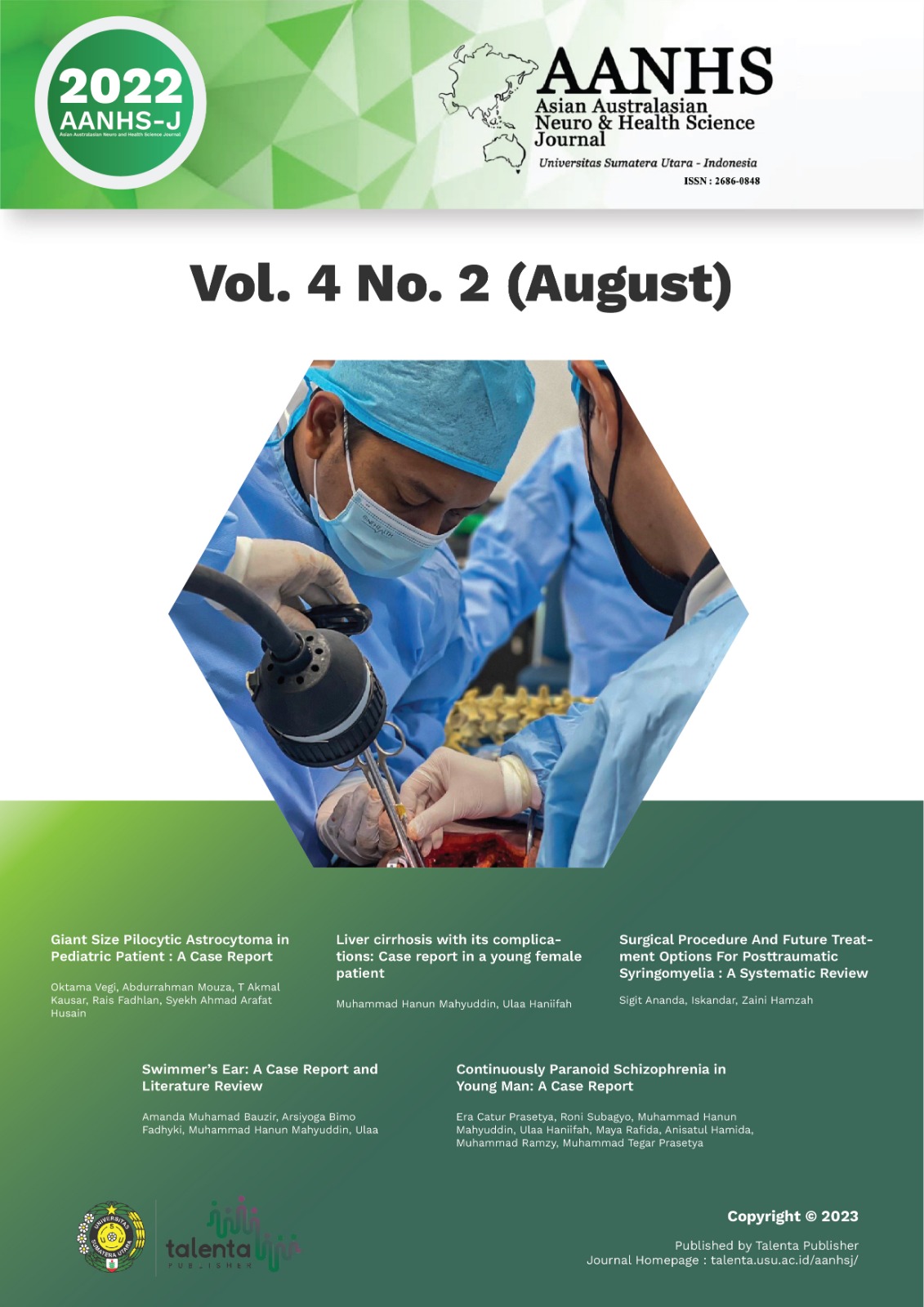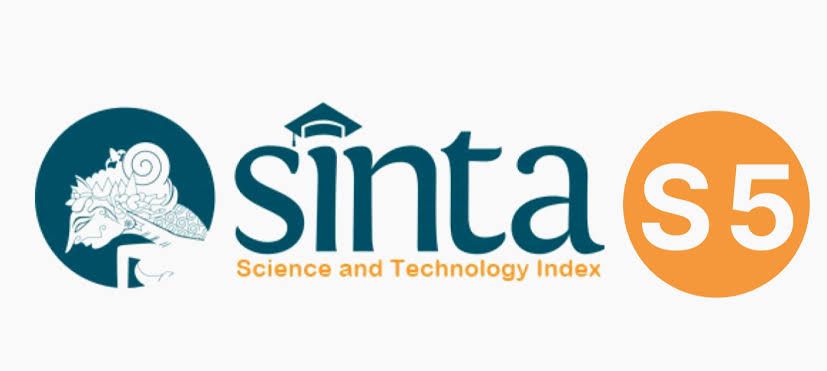Surgical Procedure And Future Treatment Options For Posttraumatic Syringomyelia : A Systematic Review
DOI:
https://doi.org/10.32734/aanhsj.v4i2.8855Keywords:
spinal cord injuryAbstract
Objectives
To find the most effective surgical procedure for posttraumatic syringomyelia (PTS) in the last 1 decade. And to look for the latest therapeutic strategies that have the opportunity to be developed in the future.
Background
Syringomyelia related trauma is uncommon case compared to other etiology such as Chiari Malformation type 1. The management of PTS is remain unclear and debatable. The aim of this study is to review PTS regarding surgical procedure, outcomes, and potential future treatment strategies.
Methods
This study uses a structured analyses focused on preferred reporting items for systematic review and meta-analyzes (PRISMA). Document selection using the keywords “Postraumatic Syringomyelia†AND “Syringomyelia†and based on publication (10 years). We selected based on the 2020 PRISMA checklist and based on inclusion and exclusion criteria. A total 17 studies met the eligibility criteria. We recorded treatment strategies, level of syrinx, severity of injury, injury to symptom duration and outcomes.
Results
A total 264 participants with PTS from 15 observational studies and 2 clinical trials were reviewed. We recorded 68% of participants were treated surgically (n=181). The most common procedure is arachnoid lysis and duraplasty (32,5%, n= 59) followed by syrinx shunting (15,4%, n=28) and subarachnoid-subarachnoid bypass (11%, n=20). We found that the syrinx shunting was the most successful procedure with symptoms improved in 82% of patients postoperatively. Overall, symptoms improved in 60% participants who underwent surgery (n=110). We also found deterioration from surgical procedure in 18% participants (n=32). Beside of surgical strategy we also found another therapeutic option that use mesenchymal stromal cells (MSCs) that injected into the syrinx. We recorded a 100% success rate from this procedure (n=7)
Conclusion
Although the overall outcomes of the surgical procedure for PTS are still unsatisfactory, the syrinx shunting procedure seems to be considered as the most effective surgical procedure. Other therapeutic strategies such as MSCs is considered promising but still require further researches with larger sample sizes.
Keywords : syringomyelia, syrinx shunting, trauma
Downloads
Downloads
Published
How to Cite
Issue
Section
License
Copyright (c) 2022 Asian Australasian Neuro and Health Science Journal (AANHS-J)

This work is licensed under a Creative Commons Attribution-NonCommercial-ShareAlike 4.0 International License.
The Authors submitting a manuscript do understand that if the manuscript was accepted for publication, the copyright of the article shall be assigned to AANHS Journal.
The copyright encompasses exclusive rights to reproduce and deliver the article in all forms and media. The reproduction of any part of this journal, its storage in databases and its transmission by any form or media will be allowed only with a written permission from Asian Australasian Neuro and Health Science Journal (AANHSJ).
The Copyright Transfer Form can be downloaded here.
The Copyright form should be signed originally and sent to the Editorial Office in the form of original mail or scanned document.














